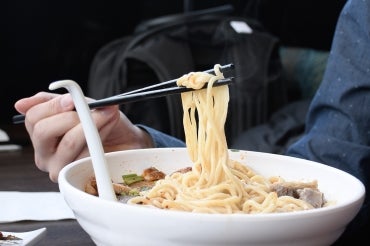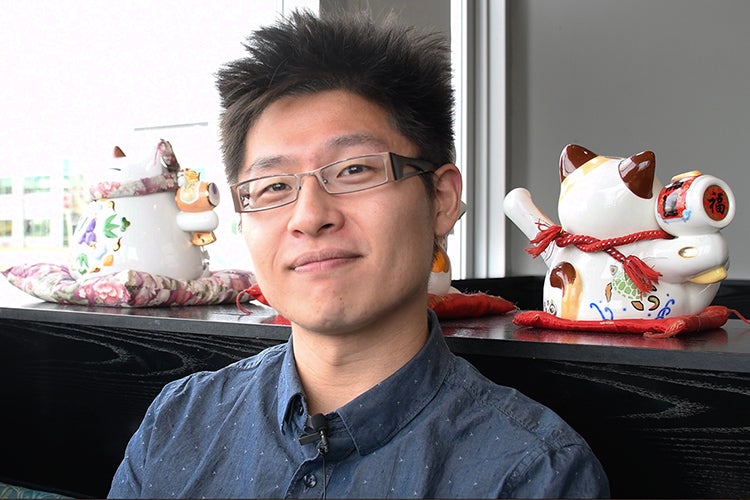A 'culinary ethnographic investigation': How a U of T student tracked the journey of the Lanzhou noodle

Published: April 20, 2018
"Bong, bong, bong!"
Andy Liu, a fourth-year history student at the University of Toronto, recalls going into the Magic Noodle restaurant for dinner one night and being met by that loud sound, made by a chef smashing dough onto a board.
Then he got to thinking about what he was eating – the authenticity of the food and the history behind it.
“Regardless of if it’s here in Toronto or if it’s in China, these noodle restaurants are everywhere,” says Liu. “But unlike McDonald's, there is no organization behind them. I wanted to know where they came from.”
Liu, a student at U of T Scarborough, decided to conduct his own “culinary ethnographic investigation,” tracing the Lanzhou noodle from the Magic Noodle restaurant in Scarborough to the original recipe that dates back over 200 years.
See Liu's research in a digital story map
When Liu began his search, he discovered scholarly research into the topic was limited.
U of T Scarborough food historian Jeffrey Pilcher says conventional research methods are tricky when it comes to this area of history.
“Food history is one that is often very hard to look at using traditional historical sources. When historians go into a topic, say a politician’s history, you go into the papers of the politician or the government reports,” he says. “Of course most chefs don’t leave papers behind. They’re too busy cooking to write things up.”
Liu turned to newspapers and blogs from the city of Lanzhou in northwest China to gain insight into the perspectives of locals. He wanted to discover how people in the area connected with the dish.
Food is central to cultural history and for this research, Pilcher says, the substance comes from the cultural understanding of the meal rather than providing chronological accuracy.
“It is about how we have come to value this particular recipe and how we think about it,” says Pilcher. “What is the meaning of Lanzhou noodles in China and now increasingly in Toronto.”

U of T Scarborough student Andy Liu (photo by Joseph Burrell)
Liu created a digital story map that charts the noodle's journey from region to region, starting outside of Lanzhou with the original recipe from Chen Weijing, a renowned scholar and apparent inventor of the Lanzhou noodle. Liu fills out his research with information that tells the entire story of this dish with particular emphasis on the significance it holds in Chinese history.
The modern version of the Lanzhou beef noodle is believed to be very different from the meal Chen invented because at the time, no form of standard measurements had been created. For generations, those following the recipe had to interpret the information in their own way. This was rectified when chef Ma Zilu created a standard measurement for the ingredients and began selling his interpretation across China, which meant the noodles spread as far as Guangzhou.
The dish remained fairly local to the area until the 1980s, when restaurateurs in the nearby county of Hualong began opening noodle shops. With only a few hundred kilometres between the two areas, Hualong residents were able to travel to Lanzhou to gain experience in noodle making and bring the knowledge back home. The impoverished farming area found immense economic relief through the spread of these restaurants. By 2014, more than 12,000 “Lanzhou beef noodle” restaurants opened across the country.
Liu concludes his exploration by taking a trip back to Magic Noodle to see how the experience stands up to his research. He evaluates the authenticity of the meal, the restaurant’s appearance, the menu options and pricing. The assessment gives a neat finish to the project and showcases the journey from Lanzhou to Scarborough.



